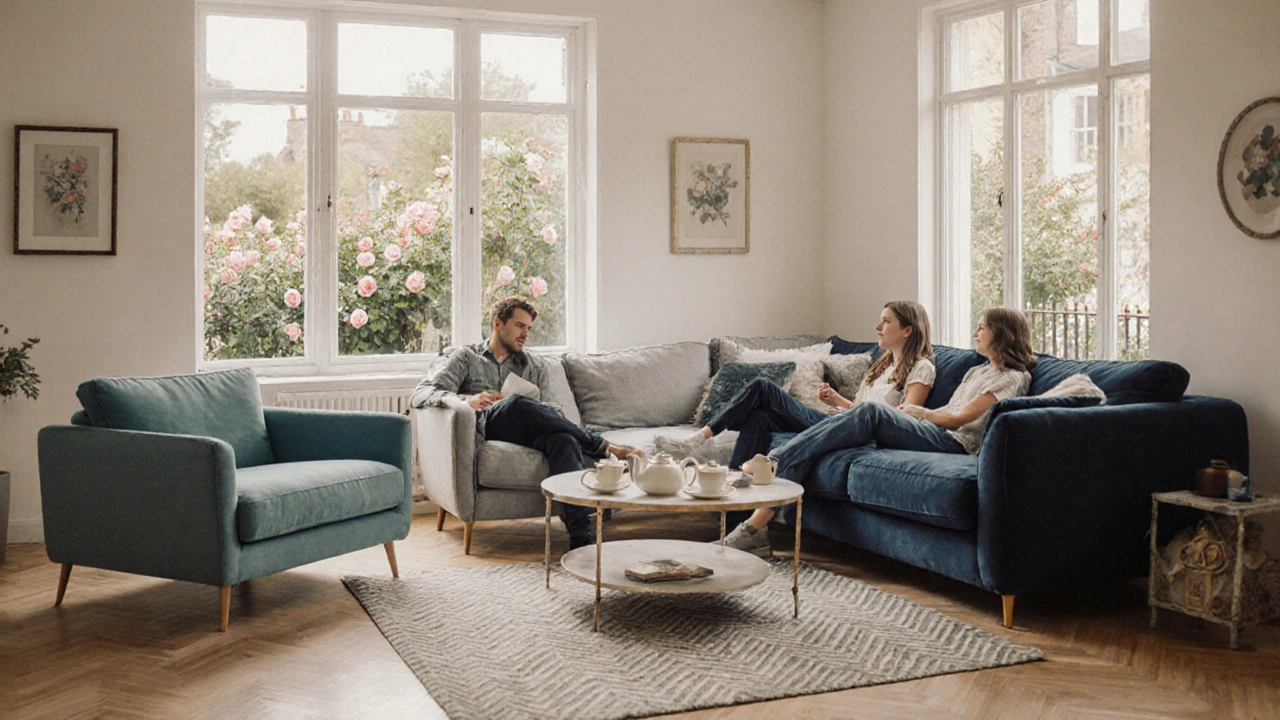Seating Capacity: What It Is and Why It Matters
When you shop for a sofa, recliner or even a garden chair, the first thing you should ask yourself is: how many people will sit on it? That number is the seating capacity, and it decides if a piece will feel cramped or just right. Too small, and guests will have to squeeze; too big, and you waste space and money.
Most retailers list capacity in the product specs, but it’s easy to overlook. A good rule of thumb is to match the capacity to the room’s layout and the way you use the space. If you host movie nights, a larger sofa or sectional makes sense. If you mainly need a quiet reading spot, a single‑person recliner may be enough.
Why Seating Capacity Matters for Every Room
Living rooms are the hub of family life, so the right capacity keeps everyone comfortable. A corner sofa with a high capacity can turn a small room into a conversation zone, while a low‑capacity loveseat might feel out of place in a large open plan. In bedrooms, a sofa bed’s capacity influences how well it doubles as a guest bed. A three‑person sofa bed can host friends, but it also needs a strong mattress to stay comfortable.
Outdoor spaces have the same rule. A garden set that seats four works well for a balcony, but a six‑seat set can overwhelm a modest patio. Knowing the capacity helps you avoid over‑buying and keeps traffic flow smooth.
Tips for Picking the Right Seating Capacity
1. Count Your Regular Users. Write down who sits on the furniture most often – families, roommates, or occasional guests. If three people share a TV every night, aim for a sofa that seats at least three comfortably.
2. Measure Your Space. Use a tape measure to note the width, depth and height of the area. Add a few inches for movement. If a section of the room is only 150 cm wide, a 200 cm sofa will block pathways.
3. Check the Seat Width. The average adult needs about 55–60 cm per seat. Multiply that by the number of users to get a minimum sofa length. For four people, look for at least 220 cm of seating.
4. Consider the Furniture Shape. Corner sofas, L‑shaped sections and modular pieces let you add seats without extending the footprint. A left‑hand facing corner sofa, for example, can fit more people in a tight corner while keeping the middle of the room clear.
5. Test the Comfort. Sit on the piece in the store or read user reviews. A high capacity sofa can feel flimsy if the frame or springs are weak. Look for solid hardwood frames and quality cushions to ensure the seat holds up over time.
6. Think About Future Needs. If you plan to have guests more often, opting for a slightly larger capacity now saves a future purchase. A recliner that seats two may be perfect now but could feel limiting later.
7. Match the Style. A sleek, low‑profile sofa with a small capacity works in modern spaces, while a plush, high‑capacity sectional fits a relaxed, family‑friendly room.
By keeping these points in mind, you can pick furniture that feels right the first time. No more awkward shuffling or unused seats, just a setup that fits your life.
Remember, seating capacity isn’t just a number – it’s a guide to comfort, space efficiency and long‑term satisfaction. Use it to shape your living room, bedroom or garden area, and you’ll enjoy every sit, stretch and sit‑down for years to come.
Two Sofas vs One Corner Sofa: Which Is Best for Your Living Room?
Discover the pros, cons, costs, and styling tips for choosing between two sofas or a corner sofa. Get a clear comparison and real‑world scenarios to decide the best seating for your living room.
View more